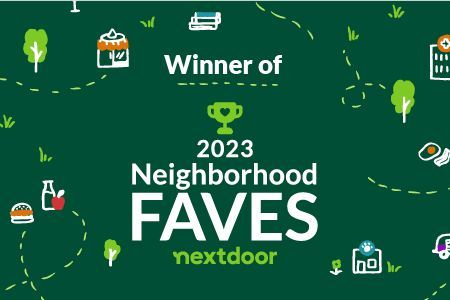FAQs
TLC Wildlife Management
Are you interested in wildlife management services? We have the answer.
Check out these FAQs and give us a call today for more information!
-
Why don't you trap and remove animals? I just want it gone!
Access to compromised areas of a property, such as damaged soffits or walls, under decks, sheds or porches, or uncapped chimneys or vents, are ALWAYS the root cause of wildlife intrusions. Trapping and removing an animal does not solve the cause of the problem and brings several challenges to an already stressful situation. Trapping companies set traps to capture the animal in question but often catch other unwanted animals as well. This means customers pay for additional site visits (trappers are required to check traps every 24 hours) as well as a fee per animal removed.
Animals that are trapped are left for up to 24 hours in all weather conditions without access to food or water until the trapping company returns to collect it. Once an animal is trapped, ODNR mandates that it is considered a "nuisance" animal and therefore must be euthanized. The animal can be released, but it must be at the site where it was collected or "on-site". If the access points have not been closed off before the animal is released, it will simply return to that area. Since animals trapped and removed from a property must be euthanized, nursing females are taken from their offspring, leaving those babies to perish wherever they were left. This results in a larger, more expensive problem often with unpleasant noise or odors.
Our humane and non-lethal approach means less interaction with wildlife, fewer visits to your home, lower costs, and a permanent solution to your problem. We perform thorough interior and exterior inspections to locate all points of entry and to ensure that all animals are located. In cases where we find nursing females, we ensure all offspring are removed and reunited with mom. Once we are sure the structure is free from animals, we provide a permanent solution to repair compromised areas and prevent future visitors.
-
How can I mitigate wildlife myself?
The first step to mitigating unwanted visitors is to remove consistent sources of food and water. Feeding pets or feral cats outside can draw in unwanted visitors and can increase the spread of diseases, including infections in domestic pets. They can also be attracted to dog houses or cat boxes that are outside. Be sure that compost piles and garbage cans are secured with appropriate fencing or bungee cords/ straps. Bird feeders also attract wildlife to your home, including birds and squirrels that will look for nesting opportunities in and around your property structures.
Property owners will want to be sure to screen off any possible access points like vents, chimneys, or damaged soffits. Window wells should be screened to prevent animals from falling in and getting trapped. Decks and patios should be monitored for areas of activity which can be addressed with underground skirting. Always, we recommend homeowners make every effort to ensure that no wildlife is currently using a compromised area before closing or repairing the animal so as not to trap animals inside the home. Scheduling a full interior and exterior inspection with a wildlife professional can ensure that all wildlife is safely evicted before any repairs or preventative measures are done.
-
What should I do if I find sick or injured wildlife?
If you find sick or injured wildlife, you should contact your local wildlife rehabilitator first. Some animals don't actually need help and they are a great resource for determining if and when human intervention is needed. https://www.owra.org/find-a-rehabilitator This link is for the Ohio Wildlife Rehabilitators Association, where you can find a list of rehab facilities in your area.
If you can safely collect the animal, you can do so, and transport it to a rehab facility yourself, as there are often fees associated with collecting a sick or injured animal. Most rehabilitators are non-profit organizations so collection and transportation of an animal to them is sometimes required. If you must collect an animal, a good approach is to quietly approach the animal and place a Rubbermaid-type container over the animal. Then slide the animal and container onto the lid and secure the lid with tape for transport. Be quiet and try to avoid sudden movements or loud noises to prevent additional fear or stress to the animal. As tempting as it is, do not attempt to feed wildlife as they require very specialized diets. Simply contain the animal and leave it in a quiet place until it can be transported to a rehab facility. Never pick up a wild animal, and leave close contact with wildlife professionals.
-
I trapped an animal. Now what do I do?
By law, once an animal has been trapped, it is deemed a nuisance animal, and you have 2 options. The animal must be released at the same site where it was trapped, or it must be euthanized. Remember that euthanizing and removing wildlife does not solve the reason they are in your home or business. Only permanent mitigation and repair of compromised areas will prevent wildlife infestations.
TLC Wildlife Management does not provide euthanasia services. If you have trapped an animal and are not contracted with a trapping company, you can release the animal on-site and call us to perform an inspection to address the cause of the problem. Once we determine the compromised areas, we will evict the animal, ensuring no offspring are left behind, and repair the area with long-lasting mitigation techniques.
-
How is TLC different from other companies?
TLC Wildlife Management provides a solution that is completely non-lethal. We do not trap or euthanize wildlife. Instead, we allow the animal to leave on its own to forage for food and water using a temporary one-way door. While some companies simply remove the animal in question, we prevent it from returning with our proven and permanent methods. We inspect for offspring, and whenever possible collect those babies for reuniting with the mother on the outside of the structure. TLC uses the behavior and biology of wildlife to provide species-specific solutions that result in permanent eviction and exclusion. Our services are less expensive and less intrusive than traditional trapping and deliver more predictable and targeted results.
Since 1995 owner Adam Turpen has been dedicating his career to the protection and enjoyment of our native wildlife. Our mission is to help people co-exist with our wild neighbors and to provide permanent solutions that protect property owners as well as native wildlife populations. We believe in fair, up-front pricing and we are always willing to educate and work with customers to find the solution best tailored to your specific needs. Communication is important to us, so we provide a full interior and exterior inspection (including attic spaces) and provide a written report of our findings including photos. All of our work is guaranteed.
-
What animals do you work with?
TLC Wildlife Management provides non-lethal services for the eviction and permanent exclusion of Bats, Birds, Squirrels, Skunks, Raccoons, Woodchucks, Opossums, and Canada Geese. We do not provide services for insects or mice, in those situations, we recommend Earthrite Pest Control. We also do not work with domestic animals/pets.
serving area
Central Ohio
Columbus, OH
Dublin, OH
Delaware, OH
Marysville, OH
and surrounding areas
Business Hours
- Mon - Fri
- -
- Saturday
- -
- Sunday
- -
After-Hours Appointments




Share On: